We bring them offerings of food and trinkets. We create beautiful images of them. We stand at their beck and call. We show our adoration for their blessings and fear their wrath.
Are we talking about gods, cats, or cat gods?
It’s a hard distinction to make sometimes. There’s something about our feline friends that makes us as willing to respect their wishes as our ancestors were to respect the gods. It seems excessive, considering the difference between cats and gods is that the gods were thought to rule over every aspect of human life.
Well, maybe there isn’t much of a difference.
Table of Contents
Cat Gods of Ancient Egypt
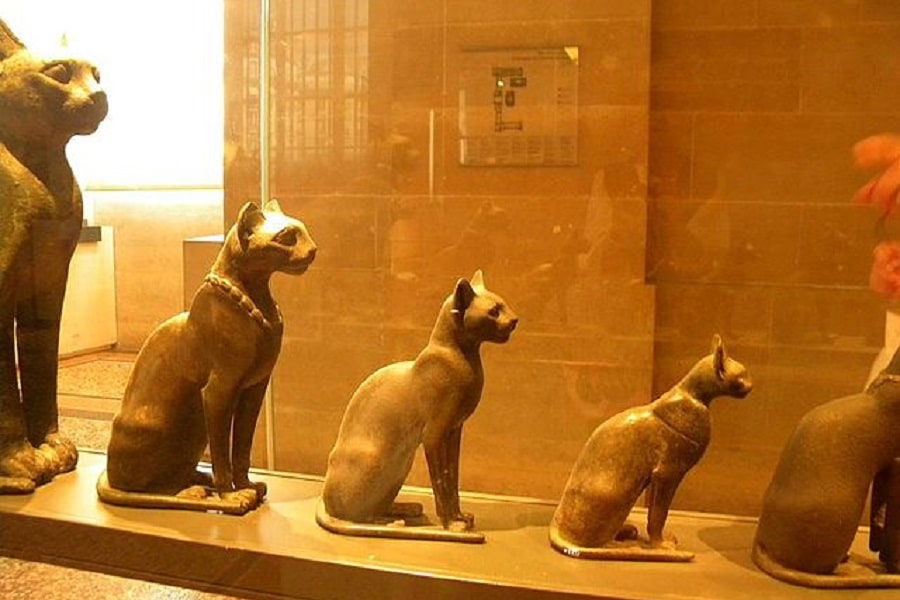
Between its pyramids and hieroglyphics, the Ancient Egyptian civilization that existed for thousands of years before Rome has given us many memorable Egyptian cat gods and goddesses.
Cats in Egypt held special importance to the people, as they still do today in most cultures — just think of how people react when they see a black cat on the street. But to understand how important they were to your average Egyptian, let’s meet their cat gods.
READ MORE: Ancient Egypt Timeline: Predynastic Period Until the Persian Conquest
Bastet
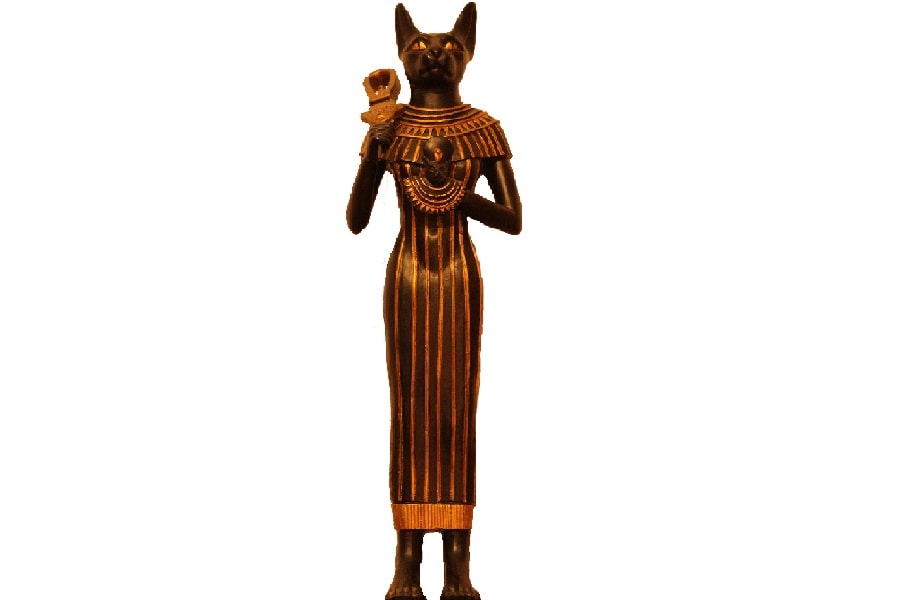
Religion/Culture: Ancient Egyptian Mythology
Realm: Goddess of protection, pleasure, and good health
Modern Cat Breed: Serengeti
Bastet, a prominent cat goddess from Ancient Egypt, is probably the most famous of all the cat gods. You’ve likely seen images of her in her most common form, with the head of a cat and the body of a woman. Her physical, earthly form, is entirely feline. She’d look like any other house cat, although she’d probably have an air of authority and disdain. Well, more of an air of authority and disdain than a typical cat.
READ MORE: Ancient Egyptian Weapons: Spears, Bows, Axes, and More!
Although we see the goddess Bastet as the Egyptian cat god, as a deity she was the goddess of protection, pleasure, and good health. In myths, it’s said she would ride through the sky with her father Ra — the sun god — protecting him as he flew from one horizon to the other. At night, when Ra was resting, Bastet would morph into her cat form and protect her father from his greatest enemy, Apep the serpent.
Bastet was usually seen carrying a sistrum — an ancient instrument that was like a drum — in her right hand and an aegis, a breastplate, in her left.
Bastet’s modern cousin would be the Serengeti cat — Serengetis. Despite being a domestic cat breed, they’re pretty close in their lineage to their wild ancestors; they have big pointed ears and long, lithe bodies that look a lot like the statues of cats dedicated to Bastet. Their sleek, stately appearance makes them regal enough to represent a god and receive worship like Bastet. They’re also very loyal, the same way Bastet is to Ra.
Sekhmet

Religion/Culture: Ancient Egyptian Mythology
Realm: Goddess of war
Modern Cat Breed: Abyssinian
Sekhmet is one of the lesser-known Egyptian cat goddesses, especially compared to the goddess Bastet. She was the goddess of war and would protect the pharaohs of Egypt as she led them into battle. Like Bastet, she rode with the sun god through the sky. However, her role was to create fire of Ra’s eye (the sun) as well as to destroy all of his enemies.
She was usually depicted as a lioness, or as a woman with the head of a lion. Interestingly, she was also associated with healing and medicine. For this reason, she was the goddess Egyptians turned to when they needed to “cure” a problem in their lives. They would offer food and drink at her altars, playing music and burning incense.
Abyssinians are a modern cat breed that looks a lot like little lions, mimicking Sekhmet’s earthly appearance. They have big almond-shaped eyes and coats with very deep colors, which is due to the fact that their individual hairs are striped. The breed also originated near the Nile River. As very active cats, an Abyssinian might enjoy the music (and definitely the food) offered at one of the shrines made for them.
Mafdet

Religion/Culture: Ancient Egyptian Mythology
Realm: Goddess of judgment, justice, and execution; protector of Ra, the Egyptian sun god
Modern Cat Breed: Savannah
Our next Egyptian cat goddess, Mafdet, whose name means “the runner,” would rip out the hearts of wrongdoers and deliver them to the pharaoh’s feet. She is usually represented as a woman having the head of a cheetah, with braided hair that ends in scorpion tails.
Although lesser known than the goddess Bastet, Mafdet is thought to have had cults in her name long before Bastet started being worshipped, giving her a much bigger footprint on Egyptian mythology and history. She provided protection against snakes, scorpions, and other dangerous animals — in fact, it was thought that all it took to kill a snake was a grazing strike from her claws.
What makes the Savannah cat the best choice to be Mafdet’s cousin is its coat. They’re spotted just like a cheetah, and are, in fact, related to African wild cats. Like Mafdet, the Savannah cat is very protective to the point where it can be aggressive around strangers.
They can also jump as high as eight feet, which is about as close to being in the sky as any housecat will get. And, interestingly, a Savannah cat’s hiss sounds like a snake’s hiss — so both Mafdet and Savannah cats have a relationship with snakes.
READ MORE: Snake Gods and Goddesses: 19 Serpent Deities from Around the World
Cat Gods in Ancient Babylon
Although the Egyptian cat gods are some of the most well-known, many other cultures celebrated our feline friends. For example, in nearby Babylon, there were many gods and goddesses who took on the shape and or characteristics of a cat.
Nergal
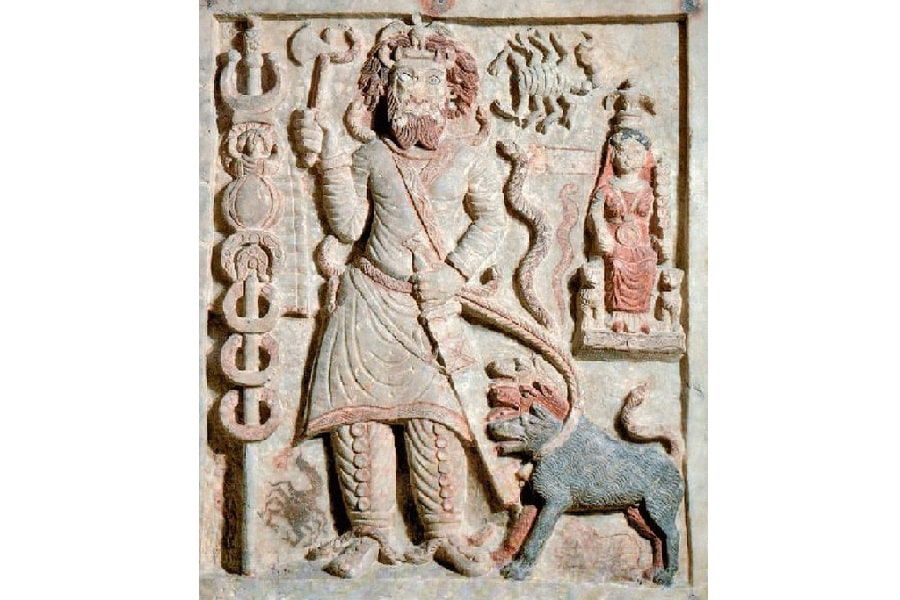
Religion/Culture: Ancient Babylonian Mythology
Realm: Destruction, war, and the god of death
Modern Cat Breed: Bombay
Nergal was usually represented as a lion, one of the most ferocious cats known to humanity. He was often known as “the furious king” and was frequently invoked for protection, while also being called “the burner” for his association with the high summer sun — and his penchant for mindless destruction.
Known for rampaging and killing without regret or remorse, Nergal — according to one myth — was feeling stagnant and bored one day, and so decided to disguise himself and go to the city of Babylon.
There, he found the god-king of the city, Marduk, who would have known it was him if not for the disguise and driven him (and his destructive nature) out of the city.
Nergal commented slyly on Marduk’s clothes, noting they were somewhat shabby. Marduk, embarrassed, agreed and resolved to go to a tailor. With Marduk out of the way on the opposite side of the city, Nergal rampaged through Babylon, indiscriminately leveling buildings and killing citizens.
It’s thought that Nergal might have served as an explanation to people as to why they still experienced seemingly senseless suffering if they were presided over by otherwise benevolent gods.
He was beyond the understanding of both the other gods and mortals and so humans could stay secure in their faith while being able to attach some kind of explanation to otherwise indiscriminate violence or anguish.
Sometimes our cats’ behaviors can be beyond our understanding too. Bombay cats are a more aggressive breed, which makes them a good match for Nergal. When they get bored, they might start acting naughty to get your attention, or even just to entertain themselves.
They’re also very loud and meow and cry often. These feisty cats are a good representation of the vindictive Babylonian god, although the extent of their destructiveness is usually limited to a room in your house rather than an entire city.
READ MORE: The Satraps of Ancient Persia: The Guardians of the Realm
Indian Cat Deities
Another culture that also has a cat goddess is Hinduism — an ancient religion practiced mainly in India. In general, the cats form a less prominent role in this pantheon, but the deities coming from the subcontinent were powerful entities that had a close connection to humanity.
READ MORE: The 10 Most Important Hindu Gods and Goddesses
Dawon
Religion/Culture: Hinduism
Realm: The goddess Parvati
Modern Cat Breed: Toyger
Cousin: Toyger
Dawon, or Gdon, is the sacred tiger that was given to the goddess Parvati as a gift from the other gods, representing her power. Dawon serves as Parvati’s steed in battle, and it attacks enemies with its claws and fangs. It was often shown as a Ghatokbahini or a lion-tiger hybrid.
As you might guess from the name, the Toyger cat has stripes that resemble a tiger’s, making it a pretty easy pick as Dawon’s modern little sibling. Toygers are known for being good partners to humans like Dawon served as Parvati’s partner. They can even be trained to walk on leashes — which isn’t quite the same as riding into battle, but getting a leash on your cat might count as a battle.
Japanese Cat Gods
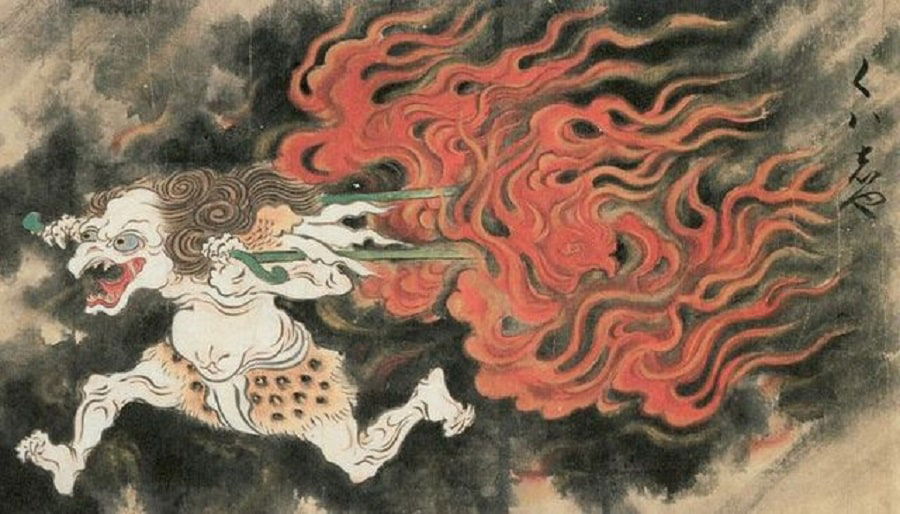
The practice of worshipping cat gods is also present in Japanese mythology, a practice known as Shintoism.
READ MORE: Japanese God of Death Shinigami: The Grim Reaper of Japan
Kasha
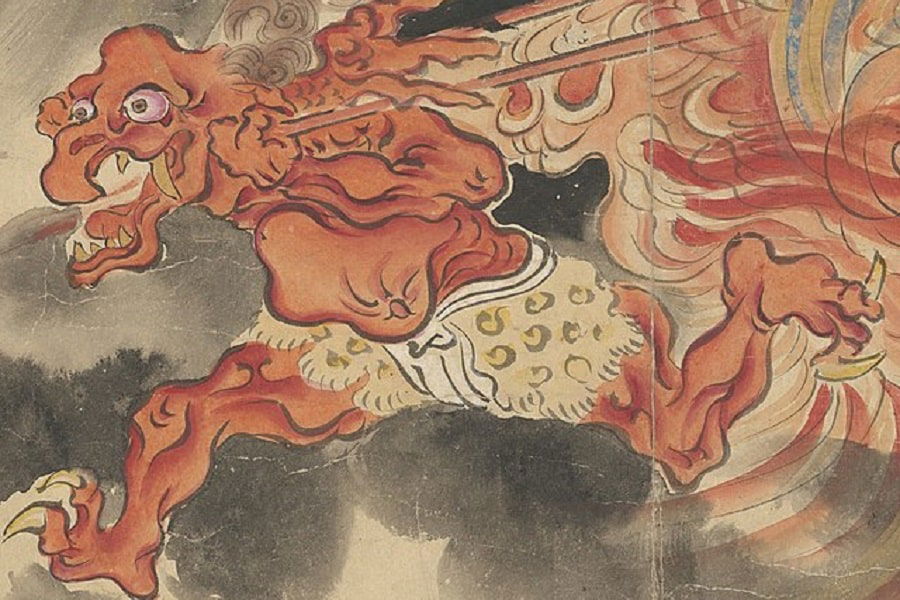
Religion/Culture: Japanese mythology
Realm: The spirit world
Modern Cat Breed: Chausie
The kasha is a yokai or a supernatural monster, spirit, or demon in Japanese folklore. It is a huge creature — the size of a human or bigger — that looks like a cat. They prefer to come out during stormy weather, or at night, and are usually accompanied by hellish flames or lightning. And, they can hide their true forms, transforming into regular house cats to live among humans.
READ MORE: Japanese Gods and Mythology: The Shinto Religion
The kasha revealed their true forms during funerals when they’d leap down from their perches to snatch corpses from coffins; it’s believed that a person whose body had been stolen would not be able to enter the afterlife.
The kasha would either eat the bodies or carry them away to the underworld, where they were to be judged for their wickedness during their lives. The kasha also sometimes served as messengers of the underworld, collecting the corpses of evil people.
As a defense against the kasha, priests would hold two funeral services. The first was the fake one, where the coffin would be filled with rocks, and after the kasha came and went, the real ceremony would take place. As an extra precaution, funeralgoers would sometimes play an instrument known as a myohachi, similar to a cymbal, to keep the monsters away.
A kasha’s closest domestic cat cousin would be the Chausie. Like the kasha, Chausies are big cats — some can get as tall as eighteen inches and weigh as much as thirty pounds.
That’s the size of a medium-sized dog! They’re also very mischievous, as they’re especially bright and will get up to no good when you’re not around. Like the kasha, you have to keep an eye on them.
Read More: The History of Japan
Did Ancient Civilizations in North America Have Cat Gods?
Evidence of cat gods being worshipped can be found in many of the cultures prominent in North America during ancient times, showing that worshipping cats was a worldwide phenomenon.
READ MORE: Native American Gods and Goddesses: Deities from Different Cultures
Mishipeshu
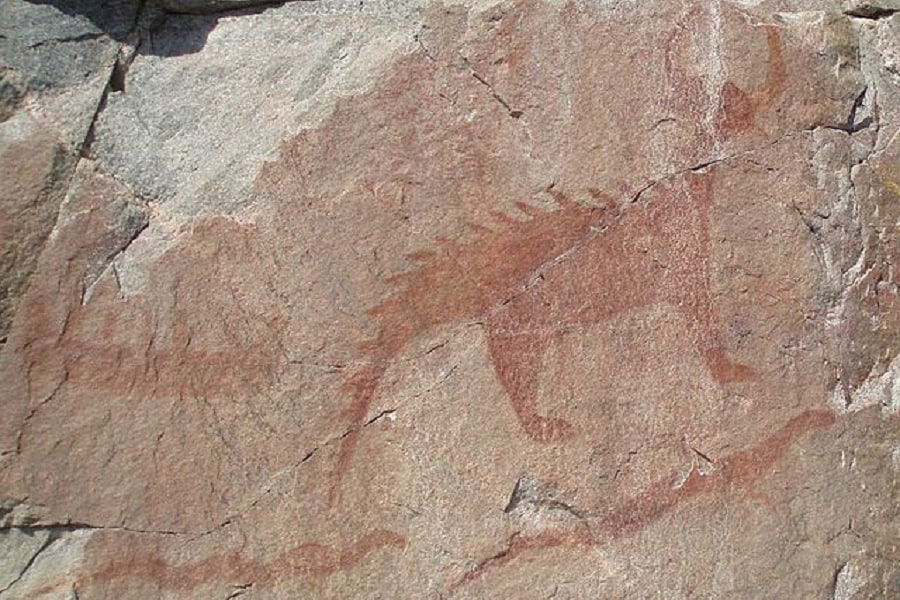
Religion/Culture: Ojibwa
Realm: Goddess of water, protection, and winter
Modern Cat Breed: Highlander Shorthair
Mishipeshu is a supernatural creature from Ojibwa legends whose name means “great lynx.” It looks like a cougar with horns, and its back and tail are covered in scales instead of fur — sometimes it was said that Mishipeshu’s horns and scales were made of pure copper. It was thought to live in the depths of large lakes.
Mishipeshu was the cause of waves, whirlpools, rapids, and generally turbulent waters; sometimes breaking the ice under people during the winter. However, Michipeshu was also associated with protection and medicine, and praying to Mishipeshu would ensure a successful hunt or fishing catch.
Highlander Shorthairs are actually descendants of lynxes, which makes them a solid pick to be Michipeshu’s cousin. They have the same rounded ears and bobtail as their ancestors, and are also big fans of water, unlike most other cats.
READ MORE: Who Invented Water? History of the Water Molecule
Plus, they’re very curious about water and even like to swim sometimes. On top of it all, Highlanders are built like Mishipeshu, too — they’re a very muscular breed. All they’re missing to complete the picture are some horns and scales.
READ MORE: Ancient Civilizations Timeline: 16 Oldest Known Cultures From Around The World
Conclusion
It seems to be true that cats have always had a big influence on our lives. Our ancestors saw them as either regal demi-gods to be worshipped and protected, or fierce monsters to be wary of. Either way, ancient humans shaped some of their beliefs and behaviors around cats.
Nowadays, it’s really not much different — we don’t worship or fear them anymore, but we do arrange our lives around them. We feed them, spoil them, buy them toys and houses, and even clean their litter boxes. That’s some feline-comfortable living; wherever they’re present, cats seem to have an innate ability to convince humans to treat them like royalty.
They are partners or they are not. Felids will respect and be then respected. Or not. The Indian parable about the covenant between cat and a woman bears considering.